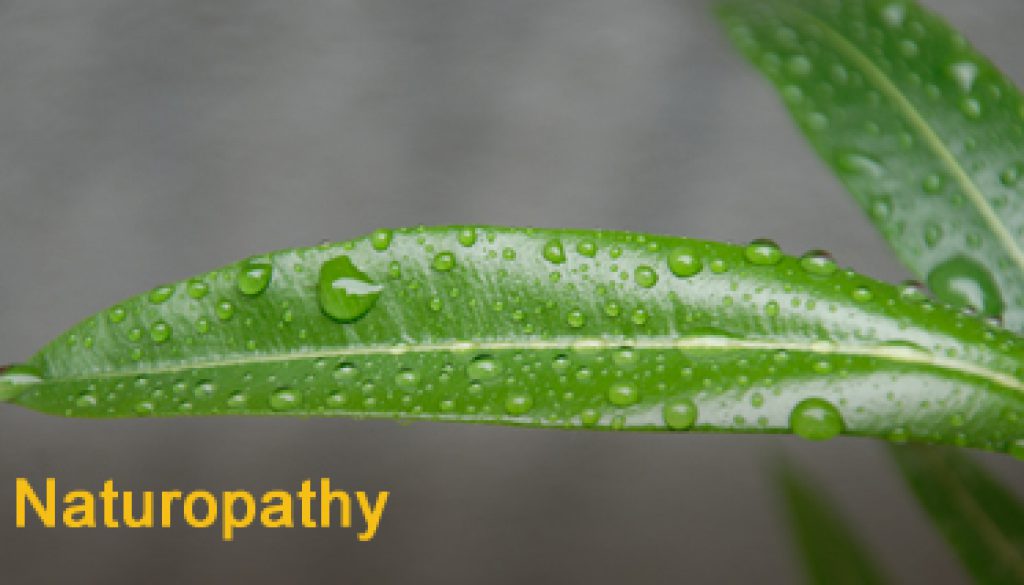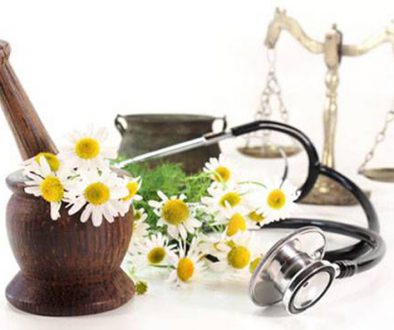Nature-cure to Naturopathy : History
Naturopathy is a distinct system of primary healthcare – an art, discipline, science, philosophy and practice of diagnosing, treating and preventing disease. It is a system of medicine, which seeks to facilitate and promote the body’s inherent self-healing mechanisms. The procedure of naturopathy range over a wide spectrum of modalities, which are always nontoxic and non-suppressive, and are always based on nutrition – dietetics, structural readjustments, physical therapies and psychological counseling. Naturopathy or healing power of Nature (Vis Medicatrics Nature) underpins almost all the therapeutic techniques of holistic alternative medicine. Naturopathy emphasizes upon the treatment of the whole person rather than just treating the disease. Although Naturopathy is a relatively recent ward its approach and principles represents the essence of a broad holistic attitude to health and disease.
Western History
Naturopathy as a discipline began in 19th century Europe. Known simply as “the nature cure”, it spread to the United States and acquired its present name around the turn of the century. Here it may also be mentioned that Modern Nature Cure movement was started Germany and other western countries with Water Cure (Hydrotherapy). Water Cure was synonymous with Nature Cure in those early days. The credit of making Water cure World famous goes to Vincent Priessnitz (1799-1851) who was a farmer. Later on others also made their contribution in this work. The name of Louis Kuhne needs special mention, who propounded the principle of Unity of Disease and treatment and provided a theoretical base to this treatment method. The book “New Science of Healing” written by him has been translated in numerous languages of the world.
Naturopathic medicine grew out of alternative healing systems of the eighteenth and nineteenth centuries, but traces its philosophical roots to the vitalistic school of medicine of Ancient Greece (circa 400 BC). Over the centuries, the two competing philosophies of medicine, vitalistic (now called natural medicine) and mechanistic (now called allopathic or conventional medicine), have alternately diverged and converged, influencing and shaping one another.
Dr. Benedict Lust was the founder of naturopathy and the man who sustained and popularized it. Lust had been exposed to a wide range of practitioners and practices of natural healing arts. He was a student of Father Kneipp, a great practitioner of hydrotherapy (water therapy). Lust brought Kneipp’s hydrotherapy with him to America from Germany in 1892. In 1902, he founded the American School of Naturopathy. The years from 1900 to 1917 were formative ones for naturopathic medicine in America as the various forms of natural medicines were combined into one eclectic system. Here the American dietetic, hygienic, physical culture, hydrotherapy, spinal manipulation, mental and emotion healing, botanical / herbal medicine, and homeopathic systems of natural healing were all merged into naturopathy.
From 1918 to 1937, great interest and support for naturopathic medicine emerged from the public. In the early 1920s naturopathic movement reached its peak in terms of public awareness and interest. Conventions nationwide were well attended by professionals, the public, and even several members of Congress. And many states enacted naturopathic licensure laws. The naturopathic journals of the 1920s and 1930s provide much valuable insight into the prevention of disease and the promotion of health. Much of the dietary advice focused on correcting poor eating habits, including the lack of fiber in the diet and an over reliance upon red meat as a protein source. Ironically, in the 1990s, the National Institutes of Health and the National Cancer Institute confirmed the early assertions of naturopathic physicians that such dietary habits could lead to degenerative diseases, and only now are advocating for the very same dietary principles that naturopaths always advocated.
Nature cure movement was started in Germany & other western countries with “Water cure” (Hydrotherapy). Water cure was synonymous with Nature Cure in those early days. The credit of making Water Cure world famous goes to Vincent Priessnitz (1799-1851) who was a farmer. Dr. Henry Lindlahr and others go to the extent of crediting him as “Father of Naturopathy”. The word “Naturopathy” was coined by Dr. Scheel in the year 1895 and was propagated and popularized in the western world by Dr. Benedict Lust. A number of Doctors of modern medicine and others became Nature Cure enthusiasts and gradually added a number of modalities within the fold of Naturopathy and scientifically developed them.
|
Name of the Naturopath |
Contribution |
|
Dr. Floyer |
Interested in curative power of water |
|
Dr. James Currie |
In 1717 wrote a book on treatment by water |
|
Dr. Vincent Preissnitz |
Father of modern Naturopathy |
|
Fr. Sebastian Kneipp |
Written a book – My water cure |
|
Arnold Rickli |
Advocated Sun and Air treatments |
|
Louis Kuhne |
Written two books – The new science of healing and The science of facial expression |
|
Adolf Just |
Written a book – Return to Nature; used mud for treatment |
|
Henry Lindlahr |
Written two books – Iri-diagnosis and The philosophy and practice of nature cure |
|
Benedict Lust |
Established a college and school of Naturopathy in New York. |
|
Dr. Andrew Still |
Father of Osteopathy |
|
Dr. Daniel D. Palmer |
Founder of Chiropractics |
|
Dr. Herry Benjamin |
Written two books – Everybody’s guide to Nature cure and Better sight without glasses |
|
Bernard Macfedden |
Father of Physical culture; written books on fasting for health |
|
Prof. Arnold Ehret |
Rational Fasting |
|
J. H. Kellog |
The New dietetics and Home handbook of Hygiene and medicine |
|
J. H. Tildon |
Inspired health and Food |
|
Herbert M. Shelton |
Written 5 books on science of nature cure |
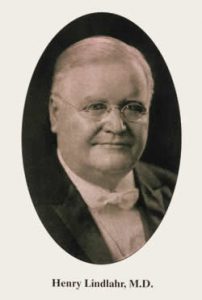


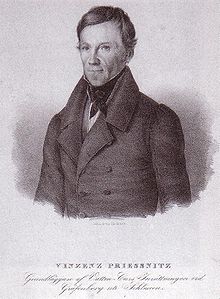

Indian History
The practice of Nature cure in some or the other way is not new to the Indians. Many of the practices are part and parcel of Indian life style and become an inseparable entity of Indian tradition and culture. Few practices have gradually evolved into full fledged therapies and have gained a status in the field of health care.
During Vedic period there is clear concept about medicinal value of water, earth etc. Among different rivers Ganga’s water was considered as instrumental one in curing Heart disease and Arthritis. In Rigveda fasting was considered as supreme medicine to eliminate accumulated toxins in different systems of human body. The Manu Smriti has prescribed rules and regulations about the personal hygiene. The Bhaghavat Gita elucidated the three varieties of food and its effect on human body and mind. Rajgir – a religious pilgrim place in Bihar state became famous due to hot springs which are capable to cure arthritis and asthma. When this hot spring was investigated scientifically it was found that the hot spring water contains sulfur ions. Other than these natural cold and hot springs artificially hot and cold bathrooms were created in Royal palaces like Red Fort, Delhi, Old Bhopal Fort, Madhya Pradesh etc.
Athapasnana is relevant protective, excellent way to taking sun-bath in which body is covered by Banana Leaves during sun bathing. Friction is an important movement in massage is done normally during taking bath. Bhugarbha chikitsa was practiced since ancient times along with sea-bathing, river bathing and pond bathing. Head and arm massage was practiced publicly at different public places, which is known as champissage.
Irrespective of the religions, faith, the Indian tradition has many things to contribute to the health of a person indirectly. Either it may be a fasting, visiting holy place, taking dip in Ganges or Sea on holy occasions, ushapana (drinking water in the early morning), achamana (drinking water while doing Japa) etc. etc. These practices though not practiced as a treatment modality, are having great therapeutic values with firm scientific background.
Not surprisingly, some other practices have drawn its origin from the practice prevalent in Nature like birds, animals etc. We often come across the practice of diseased animals where they rest to fast and vomit out the unwanted material in the body. The animals and birds take Sun bath in plenty, they get themselves into water for quite some time, they cool the body by digging the earth and getting in touch with mud.
The revival of Nature Cure started in India by translation of Louis Kuhne’s book “New Science of Healing”. Shri D. Venkat Chelapati Sharma translated the book in Telugu language in about 1894. Shri Shroti Kishan Swaroop of Bijnor translated this book into Hindi and Urdu languages in 1904. This gave a wide propagation to this system.
 Gandhiji was influenced by the book “Return of Nature” written by Adolf Just and became a firm believer of Naturopathy. Gandhiji included Naturopathy in his constructive programmes. He not only wrote several articles in favor of Naturopathy in his News paper “Harijan” but also did its several experiments too on himself, on his family members and on the members of his Ashram. He also wrote books on naturopathy like ‘Nature Cure’, ‘Key to Health’, ‘Rama Nama’, ‘Diet and Diet reforms’ etc. It may be noted here that Gandhiji used to stay at the “Nature Cure Clinic” of Dr. Dinshaw Mehta in Pune during 1934 to 1944. In his memory the Government of India established “National Institute of Naturopathy” in 1986 at that place – Bapu Bhawan, Tadiwala Road, Pune which is rendering multifaceted unique services. He established a Naturopathy hospital at Uruli kanchan, near Pune which is still functioning.
Gandhiji was influenced by the book “Return of Nature” written by Adolf Just and became a firm believer of Naturopathy. Gandhiji included Naturopathy in his constructive programmes. He not only wrote several articles in favor of Naturopathy in his News paper “Harijan” but also did its several experiments too on himself, on his family members and on the members of his Ashram. He also wrote books on naturopathy like ‘Nature Cure’, ‘Key to Health’, ‘Rama Nama’, ‘Diet and Diet reforms’ etc. It may be noted here that Gandhiji used to stay at the “Nature Cure Clinic” of Dr. Dinshaw Mehta in Pune during 1934 to 1944. In his memory the Government of India established “National Institute of Naturopathy” in 1986 at that place – Bapu Bhawan, Tadiwala Road, Pune which is rendering multifaceted unique services. He established a Naturopathy hospital at Uruli kanchan, near Pune which is still functioning.
 Due to influence of Gandhiji several national leaders joined this minority health movement. The names of Ex-Prime Minister Shri Morarji Desai, Ex-Governor of Gujarat Shri Shri Mannarayanji, Ex-President Shri V.V. Giri, Acharya Vinobha Bhave and Shri Balkova Bhave need special mention in this regard.
Due to influence of Gandhiji several national leaders joined this minority health movement. The names of Ex-Prime Minister Shri Morarji Desai, Ex-Governor of Gujarat Shri Shri Mannarayanji, Ex-President Shri V.V. Giri, Acharya Vinobha Bhave and Shri Balkova Bhave need special mention in this regard.
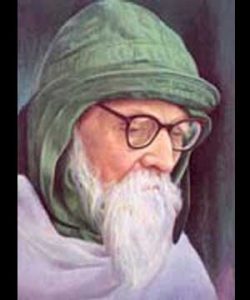 In India Nature-Cure movement started mainly in the States of Andhra Pradesh, Uttar Pradesh, Bengal, Maharashtra and Gujarat etc. The Naturopaths who did foundation work in revival of Naturopathy in different States are Dr. Mahavir Prasad Poddar, Dr. Vegi Raju Krishnam Raju, Dr. Janaki Sharan Varma, Dr. Khushi Ram Dilkash, Dr. S.J. Singh, Dr. Hiralal, Dr. Vittal Das Modi, Dr. Kulranjan Mukherjee, Dr. Sukhram Das, Dr. J. M. Jussawala, Dr. M.M. Bhamgara, Dr. B. Venkat Rao, Dr. B. Vijay Laxmi, Dr. Shashi Patil, Dr. Jayanarayan Jayaswalla, Dr. Ganga Prasad Goud “Nahar”. Shri Dharam Chanda Saravagi and Acharya K. Laxman Sharma etc.
In India Nature-Cure movement started mainly in the States of Andhra Pradesh, Uttar Pradesh, Bengal, Maharashtra and Gujarat etc. The Naturopaths who did foundation work in revival of Naturopathy in different States are Dr. Mahavir Prasad Poddar, Dr. Vegi Raju Krishnam Raju, Dr. Janaki Sharan Varma, Dr. Khushi Ram Dilkash, Dr. S.J. Singh, Dr. Hiralal, Dr. Vittal Das Modi, Dr. Kulranjan Mukherjee, Dr. Sukhram Das, Dr. J. M. Jussawala, Dr. M.M. Bhamgara, Dr. B. Venkat Rao, Dr. B. Vijay Laxmi, Dr. Shashi Patil, Dr. Jayanarayan Jayaswalla, Dr. Ganga Prasad Goud “Nahar”. Shri Dharam Chanda Saravagi and Acharya K. Laxman Sharma etc.
